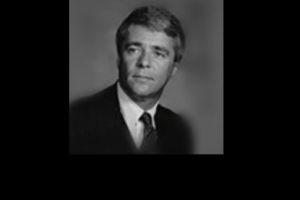/ News / The Legendary Laser Marketer Bill Shiner Passes Away

Author – David Belforte
One aspect of celebrating my 50th year in industrial laser material processing I hadn’t counted on is that others, too, would also be so celebrating. One of these pioneers, the legendary laser marketer Bill Shiner, met and started working with me 50 years ago when we were both part of a team, organized as the first interpreneurship by American Optical Corporation (AO). I’ve written about this before, but I hadn’t detailed my association with Bill.
Now, as I recollect these early days on his May 7, 2020 passing, thoughts flood through my mind. Bill, already a member of the AO Research Lab, was encouraged by the eminent scientist and father of the fiber laser, Dr. Eli Snitzer, to join our nascent Laser Products Group. Never one to pass on a potential growth opportunity, Bill interviewed with me and accepted the applications lab manager position—thus was born a relationship that lasted off and on for 50 years.
Our group was charged with establishing a new business within AO. We were also writing the book on interpreneurships in that company by pushing long-established, 100-year internal company policies and practices, an environment in which Bill thrived, as he was a fountain of new progressive ideas, matching many of my own. Together we explored, and many times created, markets for this new technology of lasers in manufacturing. Bill never passed on an opportunity to promote laser processing—to him, every incipient application looked at was perfect for our products. Checking his boundless enthusiasm, which he never lost in his career, tested me on many occasions as he flooded me fresh ideas every day.
Only one failed opportunity checked his attitude. We had signed a non-disclosure on using a solid-state laser to drill a small-diameter hole in flawed gem diamonds so that a chemical could be injected to mask the embedded flaw such that the stone could be sold as a lower-class gem. Since in those days, uninspected raw diamonds were sold in paper packets of a dozen or more stones that were bid-on, the buyer could recover some of his investment by reclassifying some flawed gems.
We were visited by a potential customer bearing several of these packets, and Bill, who had never laser-drilled a diamond, was handed a packet for testing. He, as always, believed it possible and went to his lab for proof, while our guest and I discussed prospects for success and speculated on what a laser recovery business would look like.
After an hour or so, Bill returned to my office, ashen-faced, with a handful of diamond chips and dust, having destroyed untold thousands of dollars of gemstones as he struggled to find the optimum laser settings for success. Bill’s obvious agony was appeased as the customer casually handed him another packet wishing better luck on the next batch.
I cite this because it remained a tenant in Bill’s career and our relationship—no matter the cost, if he believed in success, he could make it happen. Over the intervening years, we would recall that ominous day, which Bill claimed was the worst of his life, as a sign that nothing attempted was impossible. Bill proved this over and over throughout his career and his successes far outweighed his misses. Case in point, Bill always believed in a freestanding industrial laser trade show, where competing companies could demonstrate their products in a laser-only environment and under the Laser Institute of America (LIA), shortly after he was president, he almost single-handedly found exhibitors and invited visitors to the inaugural LME 2011 in Schaumburg, IL, even bussing in his current and prospective customers, some from Canada. Bill would and could make it happen.
His entire career in industrial lasers was marked by his positive attitude that an application for lasers could be found in any industrial plant. He and I walked the floors of many plants in the technology’s early days and I can’t recall Bill leaving without finding at least one potential application. Bill never saw an application he didn’t love for laser processing. His enthusiasm, winning smile, and positive attitude turned even the most reluctant potential user into a believer.
On both leaving AO, we separately set up companies in the same building to continue pushing industrial lasers—Bill with solid-state lasers and me with CO2. Bill’s company built my power supplies, so we opened a door in an adjoining wall and helped each other out when asked. Bill turned his company into a factory in solid-state laser processing and he, and partner Al Batista, eventually sold the business to Coherent, becoming the VP of marketing.
I moved on to very high-power CO2 lasers and then into consulting and eventually into publishing. Bill and I remained in contact usually on LIA business. Here again, Bill’s personality assisted Ron Schaeffer and me to build the LIA Northeastern Section into the most vital in the U.S., as Bill dragooned speakers and delivered audiences to Section events all over New England. You could not say no to Bill’s winning attitude
In 2002, I received a call from Bill to discuss a fledgling company making fiber lasers. He had worked with Eli Snitzer at AO and was familiar with the technology—after meeting CEO Dr. Valentin Gapontsev, he saw another opportunity to push laser processing technology into manufacturing companies. He joined IPG Photonics and became the driving force behind industrial acceptance of the technology, shepherding its growth through an IPO to its eminence as the global leader in fiber laser technology. Through all the fame associated with this, Bill remained the same smiling, positive attitude zealot. A legion of friends, associates, and customers around the world knew Bill for this. He was one-of-a-kind and we will all miss him.
My sympathies go out to his wife Nicki and his son and daughters.
Original article can be found here: https://www.industrial-lasers.com/commentary/dabbling/article/14175792/the-old-order-changeth-bill-shiner



